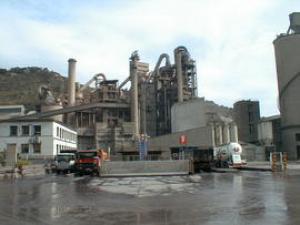 Scientists have shown that using mud from waste water treatment plants as a partial alternative fuel can enable cement factories to reduce their CO2 emissions and comply with the Kyoto Protocol, as well as posing no risk to human health and being profitable. These are the results of an environmental impact assessment.
Scientists have shown that using mud from waste water treatment plants as a partial alternative fuel can enable cement factories to reduce their CO2 emissions and comply with the Kyoto Protocol, as well as posing no risk to human health and being profitable. These are the results of an environmental impact assessment.
Dependency on oil and coal could be coming to an end. Researchers from the Rovira i Virgili University (URV) have analysed the environmental and human health impacts of an alternative fuel that solves various problems simultaneously. This is the solid waste from the water treatment plants of large cities.
The scientists have carried out the first study into this method at a cement plant in Vallcarca (Catalonia), which has been producing cement for more than 100 years, and they confirm in the latest issue of the journal Environmental Science and Pollution Research that it is "the best option for getting rid of mud that would have had to be dumped elsewhere, while also powering the plant".
"As this mud is already waste, burning it does not enter into the atmospheric CO2 emissions assigned to each country under the Kyoto Protocol", José Luis Domingo, lead author of the study and director of the Toxicology and Environmental Health Laboratory at the URV, tells SINC.
This would enable plants producing cement, one of the most contaminating industries in terms of CO2 as well as emissions of dioxins, furans and heavy metals, to consume energy in a more environmentally-friendly way. Up to 20% of the fossil fuel energy used at the Catalan plant has now been substituted for the fuel from waste water treatment plant mud.
From an economic point of view, the scientists will not say that cement plants could increase their profits by using this method, but "they will not have to pay anything to exceed their agreed emissions", the researcher points out. The economic benefits of this system also depend on the price of fuel.
One of the most important issues for the URV scientists is the reduction in environmental impact, and consequently the health risks for people living near the plants. The experiment with the mud has led to a 140,000 tonne reduction in CO2 emissions between 2003 and 2006, and will have limited the potential deaths from exposure to chemical pollutants. In addition, the study shows that using this green fuel would reduce the cancer rate by 4.56 per million inhabitants.
The researchers say it is essential to carry out separate studies for each plant because "we still don't know whether this will be positive for the whole cement industry", according to Domingo. However, if the conditions are right, using mud from waste water treatment plants in cement factories is "a very good solution", he concludes.